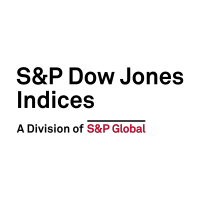Tag Archives: factor indices
How Is Indexing Informing Income Seekers?
S&P DJI’s Jason Ye and Altere Financial’s Andy Sharp join Nadine Blayney at Ausbiz to discuss how some advisors are using indices to help inform income-seeking clients as they plan for the future.
- Categories Equities
- Other Tags
Investigating the Premium Available to Factor Returns via a Focus on Sustainability
Factor indices aim to provide investors the means to access factor exposure in a cost-effective and transparent way. S&P DJI offers sustainability versions of factor indices that incorporate environmental, social and governance (ESG) scores, which allow investors to align their investments with their interests while seeking to improve risk/return dynamics. Launched in 2021, our suite…
- Categories Factors
- Other Tags
Mean Reversion
Over more than 20 years of live history, the S&P 500® Equal Weight Index has outperformed the S&P 500 by a substantial margin. Between Dec. 31, 1990, and June 30, 2023, Equal Weight’s compound annual growth rate was 11.82%, well ahead of the cap-weighted S&P 500 at 10.55%. This performance edge is a product of…
- Categories Equities, Factors, S&P 500 & DJIA
- Other Tags
The Same, Only Different
In the first quarter of 2023, the best performing of the 17 factor indices featured in our monthly factor dashboard was S&P 500® High Beta (up 12.5%), while the worst performer was S&P 500 Momentum (-3.2%). This may seem odd at first blush, since both indices are, in some sense, performance chasers—Momentum in absolute and…
Exploring the Defensive Advantage
Take a closer look at the participation and protection characteristics of sector and defensive factor indices with S&P DJI’s Craig Lazzara and Anu Ganti.
- Categories Factors
-
Other Tags
Anu Ganti, Craig Lazzara, defense beyond bonds, defensive factor indices, Defensive indices, efficient frontiers, ETFs, growth factor, low volatility high dividends, minimum volatility, participation and protection, quality factor, rising rates, S&P Dividend Aristocrats, Sector indices, US FA, volatile markets
- Categories
- Factors
- Other Tags
- Anu Ganti, Craig Lazzara, defense beyond bonds, defensive factor indices, Defensive indices, efficient frontiers, ETFs, growth factor, low volatility high dividends, minimum volatility, participation and protection, quality factor, rising rates, S&P Dividend Aristocrats, Sector indices, US FA, volatile markets
Examining the Effectiveness of Defensive Strategy Indices
What does history have to say about the effectiveness of factor indices as defensive tools? S&P DJI’s Craig Lazzara explores defense beyond bonds and how defensive factors influence risk/return in different market environments.
Defense and Volatility
As the equity market has waned and waxed in 2022, investor interest has naturally turned toward ways of mitigating portfolio losses. Some factor indices can serve this goal, but investors searching for a defensive strategy need to define their search carefully. It’s natural to think that defensive strategies will be less volatile than the market…
Defense in the Balance
Balanced portfolios traditionally (and definitionally) hold a mix of stocks and bonds. Stocks have been the better-performing asset over time, but with a level of volatility that many investors find unacceptably high. Although bonds are usually included in a balanced portfolio more as a volatility dampener than a return enhancer, during the bull market in…
Time Sensitivity and Volatility Management
We all know that in the long run, the U.S. stock market has performed very well, compounding at well over 10% per year for nearly a century. We also know that sometimes the market performs very poorly, as the S&P 500®’s 20% decline in the first half of 2022 reminds us. For an investor who…
Even Smarter Beta in South Africa? – Diversifying and Optimizing
The equity risk premia from factors (such as quality, momentum, and low volatility) have been widely accepted and adopted by investment practitioners across the globe and South Africa alike. The belief by many is that exposure to these risk factors, in addition to the market, could reward investors over the long term. While the long-term…
- Other Tags












































